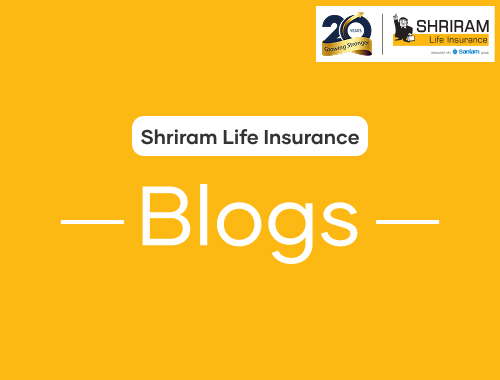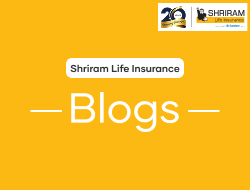Is Shriram Life Super Income Plan Taxable?
- Posted On: 19 Jan 2023
- Updated On: 19 Jan 2023
- 2076 Views
- 5 min read

Table of Contents
The Super Income Plan's premium payments are eligible for tax deductions. After the policy has been completed, the maturity bonus will have tax advantages. SIP can be improved by adding more coverages. When the Super Income Plan matures, an investor can receive a payout of 5 times the yearly premium.
With a Super Income Plan, all premiums are subject to taxes. The tax bracket defines how much tax will be charged for an individual. A Super Income Plan is a guaranteed plan for individuals who need life insurance and assured benefits around or post-retirement. The policy term may be determined by an investor retirement age or the age at which you anticipate having more personal responsibilities.
A Shriram Life Super Income Plan has tax benefits that can be claimed under certain conditions. Apart from the tax benefits, there are also maturity, super income and death benefits. Additionally, an investor can purchase add-ons or rider covers to help enhance their policy. Let's explore the Super Income Plan to understand how it works.
How does a Super Income Plan Work?
Understanding how a Super Income Plan operates might help investors tailor the investment to meet their needs.
- Choosing the beginning date for the monthly income would be the first step. By looking at this, an investor will get a general notion of the length of the premium payment deadline.
- The age you plan to retire is an excellent benchmark for choosing this tenure.
- Choosing how much you can afford to pay toward the insurance coverage each year would be the next step.
- You can obtain assistance from our agents by applying for a Shriram Life Super Income Plan. They will assist you in determining the maturity amount as well as the potential monthly benefits.
- Once the policyholder has paid all the premiums, the money will be sent to them every month.
- On the policy's maturity date, you will get a lump sum payment for completing the policy's term. The nominee or beneficiary will get the Death Benefits if the insurance holder passes away.
How is Tax Applicable on a Super Income Plan?
Tax on the Super Income Plan is charged on the premiums paid by the policy holder. All premiums are subject to taxes and other charges that will be paid by the investor along with the premium payments. Depending on the entry age, the premium payment term will be around 10 to 25 years, but it cannot be more than 50 years.
Tax benefits are available with the Shriram Life Super Income Plan. An investor can claim tax exemptions on the premiums under Section 80C of the Income Tax (IT) Act, 1961. Tax benefits on the maturity returns can also be claimed as per Section 10 (10D) of the IT Act. A policy holder must remember that all tax benefits are subject to changes according to the prevalent tax laws.
What are the Additional Covers available with the Super Income Plan?
The Shriram Life Super Income Plan offers add-ons to the plan in the form of rider covers. A rider is a provision that improves or changes the terms of a standard insurance policy. The base insurance might add optional riders, usually at an extra cost. A rider provides excellent safety and coverage against danger. You may choose from various affordable enhancements to your life insurance policy. Here are the riders available with a Shriram Life Super Income Plan:
- Accident Benefit Rider
100% of the rider sum insured shall be paid in the event of demise or complete and permanent disability caused by an accident during the rider period. If an accident leaves the investor disabled, all future premium payments are waived. During the tenure of the rider, the benefit under this rider may only be used once. - Shriram Life Critical Illness Plus Rider
If one of the 24 listed critical Illnesses is determined to be the investor’s condition, 100% of the rider sum assured will be paid if the policy holder survives for 30 days after the initial verified diagnosis. Additionally, this rider offers the potential to increase loyalty additions-based rider sum. - Family Income Benefit Rider
For a guaranteed period of 10 years or until the end of the rider term, whichever is higher, 1% of the rider sum assured is payable each month starting at the end of the month of the accident. This is also applicable in the event of accidental death or if the life assured becomes disabled due to an accident within the rider term. - Extra Insurance Cover Rider
The nominee will receive the sum promised under the rider in the unfortunate situation of the policy holder passing away within the duration of the rider cover.
Eligibility and steps to apply for a Super Income Plan
A person must be at least 25 years old to be eligible for a Super Income Plan. The policy will no longer be accessible to the policy holder once they turn 75 years old. 10 to 25 years are possible for the premium payment duration. Both the premium payment term and the entry age cannot be more than 50 years. The annualised premium starts at Rs. 30,000. The premium payments can be annually, half-yearly, quarterly or monthly. 10 times the annual premium is the amount assured.
Here are the steps to apply for a Super Income Plan:
Step 1: Apply for a Super Income Plan through the Shriram Life website. An agent will connect with the customer over a call.
Step 2: After verifying eligibility, the agent will explain the policy to the customer.
Step 3: The proposal filing will be done over a recorded call.
Step 4: E-Nach (Electronic National Automated Clearing House) registration will be done and then payment will be requested.
Step 5: The policy will be issued after verifying the KYC document.
Why should you invest in a Super Income Plan?
The premium and the maturity return tax benefits make the Super Income Plan an attractive option. These benefits let an investor earn more while also avoiding having to pay heavy tax charges. The tax levied on the premiums or the maturity value will be calculated according to the policy holder’s tax bracket.
Invest in a Shriram Life Super Income Plan to take advantage of these benefits and effortlessly protect your future. Visit the website and enter your details to get a quote or contact customer support to learn about the Super Income Plan. The Super Income Plan can help you prepare a perfect life strategy with a promising investment that includes a dual assurance of security and financial stability.
FAQs
- Can I claim tax benefits on the Super Income Plan?
Yes, you can claim tax exemptions under Section 80C of the Income Tax Act, 1961. To know more about the tax benefits of a Shriram Life Super Income Plan, an investor can reach out to our representative through the website. - How good is the Shriram Super Income Plan?
The Shriram Super Income Plan is one of the best investment options to help you plan efficiently for the future. It has benefits like life insurance and maturity benefit that help you earn more. - How can I reduce my taxable income?
You can claim tax deductions by investing in a Shriram Life Super Income Plan. By understanding our government’s rules and guidelines, investors can save on taxes through smart investments.
Key Highlights:
- Tax deductions can be claimed against the premium payments of the Super Income Plan.
- There will be tax benefits on the maturity bonus after the completion of the policy.
- A SIP can be enhanced by purchasing additional coverages.
- An investor can get 5 times the annualised premium upon completion and maturity of the Super Income Plan.
ARN:SLIC/Elec/Dec 2022/130
OTP Verification
Please Enter OTP that has been sent to your registered
Mobile Number +91
You may be interested in
People also search for
Our Other Popular Plans







